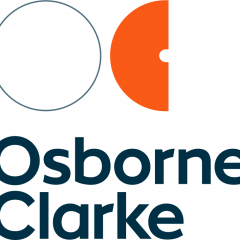Who: Case C‑201/13; Johan Deckmyn, Vrijheidsfonds VZW v Helena Vandersteen and Others
Where: European Court of Justice (“ECJ”)
When: 3 September 2014
Law stated as at: 6 October 2014
What happened:
For a quick reminder about the background to this case, please see the discussion of the Advocate General’s opinion in my earlier article; “Does Advocate General’s opinion in ECJ “Deckmyn” parody case shed light?”.
The ECJ was asked to decide questions relating to the nature and concept of parody in European Union (“EU”) law, in particular, whether there are certain conditions or characteristics that a parody should meet in order to fall within the copyright infringement exceptions in EU Copyright Directive 2001/29/EC.
The ECJ made several key decisions:
– parody must be regarded as an autonomous concept of EU law and must be interpreted in a uniform manner across the EU;
– the meaning and scope of parody should be given its usual meaning in everyday language, whilst considering the context in which the parody occurs;
– the use of parody must strike a fair balance between the rights of the copyright owner / author and the freedom of expression of the parody artist; and
– it is for the national courts to determine if the essential characteristics are fulfilled and if a fair balance is struck.
Why this matters:
The ECJ released their judgement on 3 September 2014, almost exactly a month before the UK’s copyright reforms for parody came into force on 1 October 2014. The UK courts will, therefore, now be asked to decide any resulting cases regarding the parody exception in accordance with this ECJ decision.
The following elements of the ECJ decision are those of most interest to how the law will need to be interpreted in the UK:
Parody as an autonomous concept: This was originally raised in the Advocate General’s opinion and, as discussed in my earlier article, raises some serious difficulties with regards to the differing social and cultural interpretations of humour.
The meaning of parody: The court confirmed the findings of the Advocate General, namely that there are two essential characteristics to a parody. A parody should:
i) evoke an existing work while being noticeably different from that work; and
ii) constitute an expression of humour or mockery.
According to the ECJ, the work need not display an original character of its own, but must display noticeable differences from the original so that it can be attributed to a person other than the author of the original work. It should also relate to the original work or mention the source of the parodied work.
Much of this may seem common sense as, in order for a parody to successfully mock or spoof the original work, the audience must be aware that the parody is referencing the original work. However, the concern arises around the need to constitute an expression of humour or mockery.
Is it humour or satire?
Not only do difficulties arise over the uniform interpretation of “humour” or “mockery” across EU member states, but problems can also be foreseen where copying occurs as a legitimate part of satire. The intention of satire is normally to convey a lesson, not necessarily to mock or humourise, and yet there is still a necessity to copy the original work.
Perhaps it is fortunate for the world of advertising that humour or mockery is more likely to be the intention of parody in ads than satire, but be that is it may, we will have to wait and see how the requirements and obligations under Deckmyn are interpreted before the UK courts.
It must also be remembered that under the new UK law, another requirement is that the parody must be a fair dealing to escape infringement of the mocked work.







